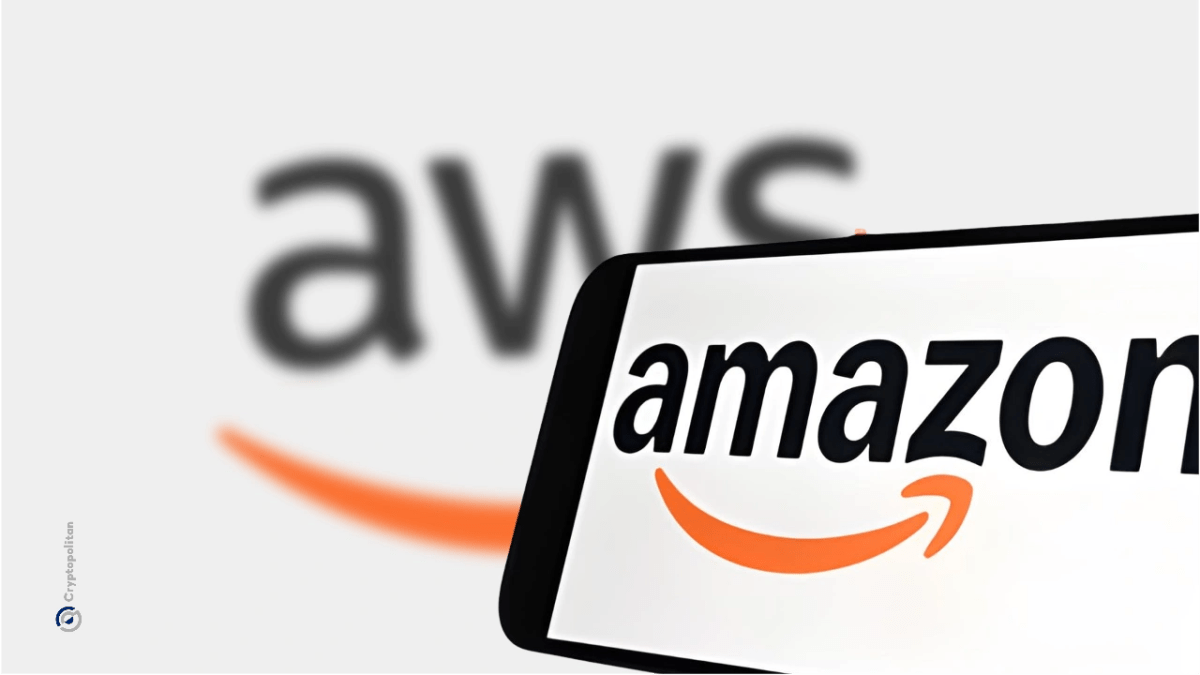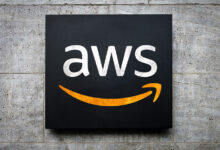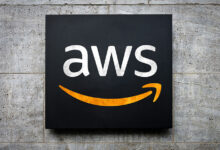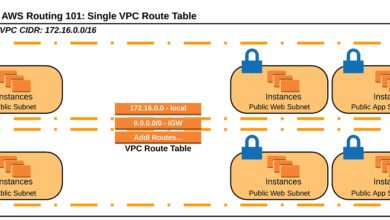AWS Marketplace: 7 Powerful Ways to Accelerate Your Cloud Growth
Looking to supercharge your cloud journey? AWS Marketplace is your ultimate gateway to ready-to-use software, tools, and services—all in one trusted ecosystem. Discover how it transforms deployment, saves costs, and scales innovation.
What Is AWS Marketplace and Why It Matters

AWS Marketplace is a digital catalog that enables customers to find, buy, deploy, and manage third-party software, data, and services that run on Amazon Web Services (AWS). It simplifies the procurement and deployment of cloud-based solutions by offering a centralized platform where businesses can access thousands of pre-vetted software offerings.
A Comprehensive Overview of AWS Marketplace
Launched in 2012, AWS Marketplace has evolved into a robust ecosystem connecting software vendors (sellers) with AWS customers (buyers). It supports a wide range of software types, including machine learning models, security tools, data analytics platforms, and enterprise applications. Whether you’re a startup or a Fortune 500 company, AWS Marketplace streamlines access to innovation.
- Offers over 10,000 products from more than 2,000 independent software vendors (ISVs)
- Supports multiple deployment models: SaaS, AMIs (Amazon Machine Images), containers, and machine learning models
- Integrated billing through AWS accounts—no separate contracts or invoicing needed
How AWS Marketplace Fits Into the Cloud Ecosystem
AWS Marketplace is not just a software store—it’s a strategic enabler within the broader AWS cloud infrastructure. It complements core AWS services like EC2, S3, Lambda, and RDS by allowing users to extend functionality without building from scratch.
For example, instead of developing a custom firewall solution, a company can deploy a pre-configured Palo Alto VM-Series firewall directly from AWS Marketplace with just a few clicks. This accelerates time-to-value and reduces operational overhead.
“AWS Marketplace allows enterprises to innovate faster by removing procurement friction and enabling instant access to best-in-class software.” — AWS Official Blog
Key Benefits of Using AWS Marketplace
The value proposition of AWS Marketplace goes beyond convenience. It delivers tangible business and technical advantages that resonate across departments—from IT and DevOps to finance and procurement.
Accelerated Deployment and Time-to-Value
One of the most compelling benefits of AWS Marketplace is speed. Traditional software procurement can take weeks or months due to licensing negotiations, vendor onboarding, and installation processes. AWS Marketplace slashes this timeline to minutes.
With one-click deployment, users can launch fully configured software instances directly into their AWS environment. This is especially valuable for DevOps teams needing rapid prototyping or disaster recovery testing.
- Deploy a WordPress site with Bitnami in under 5 minutes
- Spin up a Splunk instance for log analysis instantly
- Launch a Kubernetes cluster with pre-installed monitoring tools
Cost Transparency and Predictable Pricing
AWS Marketplace offers transparent pricing models, including hourly, monthly, annual, and bring-your-own-license (BYOL) options. All costs are visible upfront and integrated into the AWS bill, eliminating surprise charges.
This transparency helps finance teams forecast expenses accurately and align software spending with cloud budgets. Additionally, many vendors offer free trials or freemium tiers, allowing organizations to test before committing.
Learn more about pricing models at the AWS Marketplace Help Center.
Trusted and Secure Software Ecosystem
Security is a top priority for AWS. Every software listing undergoes a rigorous vetting process to ensure compliance with AWS security standards. Sellers must adhere to AWS Partner Network (APN) guidelines and provide evidence of secure development practices.
Additionally, AWS Marketplace integrates with AWS Identity and Access Management (IAM), AWS Config, and AWS CloudTrail, enabling granular access control and audit logging for deployed software.
“Every product in AWS Marketplace is reviewed for security, compatibility, and performance before being made available to customers.” — AWS Marketplace Team
How AWS Marketplace Works for Buyers
For AWS customers, using AWS Marketplace is as seamless as browsing an app store. The platform is tightly integrated with the AWS Console, making discovery, deployment, and management intuitive.
Step-by-Step Guide to Finding and Deploying Software
1. Log in to the AWS Management Console.
2. Navigate to AWS Marketplace.
3. Use filters to search by category (e.g., Security, Analytics, Networking), pricing model, or AWS service compatibility.
4. Review product details, customer ratings, and vendor information.
5. Click “Continue to Subscribe” and accept the terms.
6. Choose a deployment option (e.g., EC2 instance, SaaS subscription).
7. Configure settings (VPC, instance type, IAM roles).
8. Launch the software—AWS handles provisioning automatically.
Once deployed, the software appears in your AWS resource list and can be managed like any other AWS service.
Subscription Models and Billing Integration
AWS Marketplace supports several subscription models:
– Pay-as-you-go: Billed hourly or monthly based on usage.
– Fixed-term: Commit to 1 or 3 years for discounted rates.
– Free trial: Limited-time access to evaluate software.
– Bring Your Own License (BYOL): Use existing licenses from vendors like Microsoft or Oracle.
All charges appear on your AWS invoice, simplifying accounting and eliminating the need for separate vendor payments. This integration also enables centralized cost allocation using AWS Cost Explorer and Budgets.
Managing Deployed Software and Usage Tracking
After deployment, users can monitor software usage through AWS tools like CloudWatch and Cost & Usage Reports. You can track:
– Instance uptime and performance
– Data transfer and storage consumption
– Per-user SaaS usage (for SaaS products)
– Cost breakdown by product, account, or tag
This visibility empowers IT teams to optimize spending, identify underutilized resources, and enforce governance policies.
Selling on AWS Marketplace: A Guide for Vendors
For software vendors, AWS Marketplace represents a massive opportunity to reach millions of AWS customers globally. It eliminates the need for complex sales cycles and provides a frictionless path to monetization.
Why Software Vendors Should Join AWS Marketplace
By listing on AWS Marketplace, vendors gain access to a vast, active customer base already invested in the AWS ecosystem. According to AWS, over 150,000 customers use AWS Marketplace monthly.
- Reduce sales cycle from months to days
- Leverage AWS’s global infrastructure and credibility
- Enable self-service trials and instant deployment
- Integrate with AWS Partner Network (APN) for co-marketing
Vendors like Datadog, MongoDB, and HashiCorp have significantly expanded their reach through AWS Marketplace.
Onboarding Process and Technical Requirements
To sell on AWS Marketplace, vendors must:
1. Enroll in the AWS Partner Network (APN).
2. Complete the AWS Marketplace Seller Registration.
3. Provide technical documentation, pricing details, and support information.
4. Submit software for AWS review (security, performance, compatibility).
5. Define pricing model and contract terms.
6. Publish the product listing.
Technical requirements vary by product type:
– AMI-based products: Must be compatible with EC2 and follow AWS security best practices.
– SaaS products: Must support AWS Marketplace metering API for usage reporting.
– Containers: Must be hosted on Amazon ECR or compatible registries.
– Machine learning models: Must be deployable via SageMaker.
More details are available at the AWS Partner Solutions Portal.
Pricing, Revenue Sharing, and Financial Management
Vendors set their own prices but must adhere to AWS Marketplace’s pricing guidelines. AWS handles billing and collections and takes a commission—typically 12% to 20% depending on the product type and sales volume.
For example:
– SaaS products: 20% commission
– AMI-based software: 15% commission
– Professional services: 20% commission
Vendors receive monthly payments and detailed usage reports. They can also run promotions, offer discounts, and manage renewals through the AWS Marketplace Management Portal.
Types of Products Available in AWS Marketplace
AWS Marketplace hosts a diverse portfolio of software and services across multiple categories. Understanding these types helps buyers choose the right solution and vendors identify opportunities.
Software as a Service (SaaS) Offerings
SaaS products in AWS Marketplace are cloud-native applications delivered over the internet. Users subscribe and access them without managing infrastructure.
- Examples: Snowflake, Sumo Logic, New Relic
- Benefits: No server management, automatic updates, scalable usage
- Billing: Usage-based metering via AWS Marketplace API
SaaS is ideal for organizations seeking agility and minimal operational overhead.
Amazon Machine Images (AMIs) and Virtual Appliances
AMIs are pre-configured templates for EC2 instances that include OS, application, and settings. They allow instant deployment of complex software stacks.
- Examples: Ubuntu Pro, Red Hat Enterprise Linux, F5 BIG-IP
- Use cases: Firewalls, databases, content management systems
- Deployment: Launch directly into VPC with custom networking
AMIs are perfect for teams needing full control over the environment.
Container and Kubernetes-Based Solutions
With the rise of microservices, AWS Marketplace now supports containerized applications. Vendors can offer Docker images or Helm charts deployable on Amazon EKS or ECS.
- Examples: NGINX, Redis Enterprise, Prometheus monitoring
- Benefits: Portability, consistency across environments, CI/CD integration
- Deployment: Pull from Amazon ECR or public registries
This category is growing rapidly as enterprises adopt cloud-native architectures.
Machine Learning and Data Science Models
AWS Marketplace includes pre-trained ML models and data science tools that can be deployed on Amazon SageMaker.
- Examples: Fraud detection models, NLP engines, computer vision APIs
- Use cases: AI-powered analytics, automation, predictive maintenance
- Benefits: Skip model training, reduce data science costs
These offerings democratize AI, making advanced capabilities accessible to non-experts.
Integration with AWS Services and Tools
AWS Marketplace isn’t a standalone platform—it’s deeply integrated with the AWS ecosystem. This integration enhances functionality, security, and manageability.
Seamless Deployment with AWS CloudFormation and CLI
Many AWS Marketplace products support AWS CloudFormation templates, enabling infrastructure-as-code (IaC) deployments. This allows DevOps teams to automate software provisioning alongside other AWS resources.
For example, you can define a CloudFormation stack that includes:
– An EC2 instance running a marketplace AMI
– An RDS database
– An S3 bucket for backups
– IAM roles for secure access
Similarly, the AWS CLI and SDKs allow programmatic access to marketplace subscriptions, enabling automation at scale.
Monitoring and Management via AWS Systems Manager
Once deployed, software from AWS Marketplace can be managed using AWS Systems Manager (SSM). SSM provides:
– Patch management
– Configuration compliance
– Remote command execution
– Inventory tracking
This ensures consistent governance across both native AWS services and third-party software.
Security and Compliance with AWS IAM and KMS
AWS Marketplace products inherit the security model of AWS. You can apply IAM policies to control who can subscribe to or launch software. AWS Key Management Service (KMS) can encrypt data at rest, ensuring compliance with standards like HIPAA, GDPR, and SOC 2.
Vendors are required to document their compliance certifications, which are displayed on product pages.
Best Practices for Maximizing AWS Marketplace Value
To get the most out of AWS Marketplace, both buyers and sellers should follow proven strategies that enhance efficiency, security, and ROI.
For Buyers: Evaluating and Selecting the Right Software
Not all marketplace offerings are created equal. Use these criteria to evaluate products:
– Customer reviews and ratings: Look for consistent feedback on performance and support.
– Vendor reputation: Prefer established vendors or AWS Premier Partners.
– Support options: Check if 24/7 support or SLAs are included.
– Free trials: Test functionality before committing.
– Architecture diagrams: Review deployment guides for compatibility.
Also, leverage AWS Solution Architects for guidance on complex deployments.
For Sellers: Optimizing Product Listings and Marketing
Vendors should treat their AWS Marketplace listing as a digital storefront. Optimize it with:
– Clear, benefit-driven titles and descriptions
– High-quality screenshots and videos
– Detailed documentation and deployment guides
– Competitive pricing and trial offers
– Customer testimonials and case studies
Additionally, participate in AWS co-selling programs and webinars to increase visibility.
Cost Optimization and Usage Governance
Uncontrolled software usage can lead to budget overruns. Implement governance using:
– AWS Budgets: Set alerts for marketplace spending.
– Cost Allocation Tags: Track spending by department or project.
– Service Control Policies (SCPs): Restrict which accounts can subscribe to marketplace products.
– Automated shutdowns: Use Lambda functions to stop non-production instances after hours.
Regularly audit active subscriptions and decommission unused software.
Real-World Use Cases and Success Stories
AWS Marketplace is used across industries to solve real business challenges. Here are a few notable examples.
Healthcare: Accelerating HIPAA-Compliant Analytics
A U.S.-based healthcare provider needed to analyze patient data while maintaining HIPAA compliance. They used AWS Marketplace to deploy a pre-hardened version of Talend ETL tool, which integrated with their data lake on S3. The solution was deployed in under an hour and passed audit requirements.
Fintech: Rapid Deployment of Fraud Detection Systems
A fintech startup leveraged a machine learning model from AWS Marketplace to detect transaction fraud. Instead of training a model from scratch, they subscribed to a pre-trained solution by DataRobot, reducing time-to-market from 6 months to 2 weeks.
Media & Entertainment: Scaling Video Encoding Workflows
A streaming platform used AWS Marketplace to deploy Bitmovin’s video encoding software on EC2. During peak events, they scaled instances automatically based on demand, ensuring smooth playback for millions of users.
Future Trends and Innovations in AWS Marketplace
AWS Marketplace continues to evolve, driven by customer demand and technological advancements. Several trends are shaping its future.
Growing Demand for SaaS and Subscription Models
As enterprises shift to cloud-native architectures, demand for SaaS solutions is rising. AWS is enhancing its SaaS factory tools to help vendors build, deploy, and manage subscription-based services more efficiently.
Expansion into Data and AI Marketplaces
AWS is expanding beyond software to include data products. The AWS Data Exchange allows customers to subscribe to third-party datasets, while the ML Marketplace offers AI models and algorithms. This creates a unified marketplace for software, data, and intelligence.
Global Reach and Localization Efforts
AWS is investing in localization, enabling vendors to offer multi-language support, regional pricing, and compliance with local regulations. This helps global enterprises adopt marketplace solutions across geographies.
What is AWS Marketplace?
AWS Marketplace is a digital catalog that makes it easy to find, buy, deploy, and manage third-party software and services that run on AWS. It includes thousands of products across categories like security, analytics, machine learning, and DevOps.
Is there a cost to use AWS Marketplace?
No, there is no fee to browse or subscribe to products in AWS Marketplace. You only pay for the software you use, and those charges are billed through your AWS account. Some products offer free trials or freemium versions.
Can I sell my software on AWS Marketplace?
Yes, software vendors can list their products on AWS Marketplace by joining the AWS Partner Network (APN) and completing the seller onboarding process. AWS handles billing, while vendors retain control over pricing and support.
How does billing work in AWS Marketplace?
Billing is integrated into your AWS invoice. Depending on the product, you may be charged hourly, monthly, or annually. SaaS products use metered billing based on usage, while AMIs are billed based on EC2 instance usage plus software fees.
Are products in AWS Marketplace secure?
Yes, all products undergo a security review by AWS. Vendors must comply with AWS security standards, and products are regularly monitored for vulnerabilities. Customers can also apply AWS security services like IAM, KMS, and CloudTrail for additional protection.
AWS Marketplace is more than just a software catalog—it’s a powerful engine for innovation, efficiency, and growth in the cloud. Whether you’re a buyer looking to deploy cutting-edge tools or a vendor aiming to scale your software business, AWS Marketplace offers unmatched reach, simplicity, and integration. By leveraging its capabilities, organizations can accelerate digital transformation, reduce costs, and stay ahead in a competitive landscape. As AWS continues to expand its marketplace with AI, data, and SaaS offerings, the platform will remain a cornerstone of the modern cloud ecosystem.
Recommended for you 👇
Further Reading:









